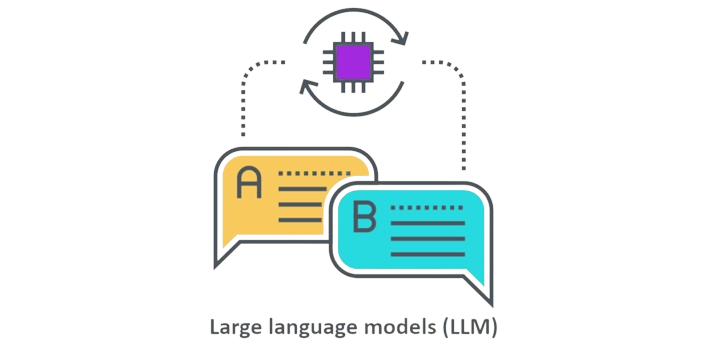
Survey research has long been a critical tool for understanding diverse populations. Still, traditional methods often fail to deliver the depth and immediacy of insights required in today’s fast-paced environment. Integrating Survey2Persona with large language models (LLMs) like GPT-4 represents a groundbreaking advancement in this field. This synergy transforms how survey data is analyzed and utilized, enabling deeper insights and more precise persona creation. This blog post explores how these technologies revolutionize survey research, enhancing the quality and application of respondent feedback.
The Evolution of Survey Research: From Traditional Methods to AI Integration
The Limitations of Traditional Survey Research
Traditional survey research has typically relied on manual data collection and analysis methods. While effective to a certain extent, these approaches often encounter significant challenges. One major limitation is the labor-intensive nature of manual data analysis, which involves coding and interpreting responses by hand. This not only requires substantial time and effort but is also prone to human error, potentially leading to inconsistencies in data interpretation. Moreover, traditional methods only extract surface-level insights, particularly from open-ended responses. Rich in qualitative detail, such responses often carry the most valuable feedback but are difficult to quantify and analyze without advanced tools. Consequently, analyzing and responding to survey data can be slow, delaying actionable insights and decision-making.
The Rise of AI in Survey Research
In contrast, the advent of AI, particularly large language models, has introduced a new era of efficiency and depth in survey research. Large language models like GPT-4 enhance natural language understanding and data processing, allowing for the rapid analysis of vast amounts of text data. They excel in identifying patterns, sentiments, and trends within open-ended responses, providing a richer understanding of respondent feedback. AI integration accelerates data analysis, enabling real-time or near-real-time insights, thus transforming survey research into a more dynamic and responsive tool. The capabilities of these models in processing and interpreting language pave the way for more sophisticated and comprehensive data analysis, moving beyond the limitations of traditional survey methods.
Survey2Persona: Enhancing Survey Analysis with Persona Creation
Overview of Survey2Persona
Survey2Persona addresses the limitations of traditional survey analysis by converting raw survey data into detailed personas. This tool processes survey responses to generate actionable profiles that encapsulate the characteristics and preferences of respondents. Unlike traditional methods that often present data in aggregate form, Survey2Persona provides a narrative that explains the motivations and context behind survey responses. This approach not only simplifies the interpretation of data but also enhances the understanding of diverse respondent groups.
By creating personas that reflect the varied traits of respondents, including demographics, behaviors, and communication preferences, Survey2Persona offers a comprehensive view of the survey population. These personas serve as detailed representations of respondent types, providing valuable insights into their needs and preferences. This detailed understanding enables the development of more targeted strategies and interventions, making survey data more actionable and impactful.
Benefits of Persona Creation in Survey Research
The creation of personas through Survey2Persona offers several significant benefits. One of the primary advantages is the contextual understanding that personas provide. By offering a narrative that explains the “why” behind responses, personas help researchers and organizations understand the underlying motivations of respondents. This contextual insight is crucial for developing strategies that resonate with specific audience segments.
Furthermore, personas enable more targeted strategies by highlighting respondents’ diverse characteristics and preferences. This detailed view allows for the development of tailored interventions and solutions that address the specific needs of different respondent groups. As a result, organizations can create more effective and personalized approaches to engagement, improving the overall impact of their survey research.
The Synergy of Survey2Persona and Large Language Models
How LLMs Enhance Survey2Persona’s Capabilities
Integrating large language models (LLMs) with Survey2Persona significantly enhances the tool’s capabilities in analyzing survey data. LLMs provide advanced text analysis capabilities that allow for a more accurate and in-depth interpretation of open-ended survey responses. These models can understand complex language patterns, identify sentiments, and extract nuanced insights that traditional methods often miss.
By leveraging the power of LLMs, Survey2Persona can analyze qualitative data with greater precision, uncovering hidden patterns and trends in respondent feedback. This advanced text analysis capability enriches the personas generated by Survey2Persona, making them more detailed and actionable. The synergy between Survey2Persona and LLMs thus leads to a more comprehensive and nuanced understanding of respondent behaviors and preferences.
Integrating LLMs with Survey2Persona
The integration of LLMs with Survey2Persona involves several key processes. LLMs efficiently process and categorize vast amounts of survey data, handling structured and unstructured responses. This capability streamlines the data analysis process, making it more comprehensive and accurate. By automating survey data processing, LLMs reduce the time and effort required for data analysis, enabling quicker and more reliable insights.
In addition, LLMs contribute to the refinement of personas created by Survey2Persona. The advanced insights generated by LLMs improve the granularity and relevance of these personas, making them more reflective of respondent behaviors and preferences. This AI-driven persona creation approach enhances the personas’ overall quality and applicability, providing more actionable and impactful insights for organizations.
Practical Applications: Leveraging Survey2Persona and LLMs in Survey Research
The combined capabilities of Survey2Persona and LLMs have a wide range of practical applications in survey research. One notable application is in the analysis of customer feedback. Companies can use these tools to analyze customer feedback more effectively, identifying key trends and sentiments that inform product development and customer service improvements. Organizations can create more targeted and responsive strategies by understanding the nuances of customer feedback.
Market research is another area where the integration of Survey2Persona and LLMs proves valuable. These tools provide deeper insights into market trends and consumer behaviors, helping businesses anticipate market needs and adjust their strategies accordingly. By leveraging LLMs’ detailed personas and advanced text analysis capabilities, organizations can gain a more comprehensive understanding of their target markets.
In the context of employee satisfaction surveys, Survey2Persona and LLMs offer valuable insights into workforce needs and preferences. Organizations can analyze employee feedback to create personas that reflect diverse workforce characteristics, leading to better engagement and retention strategies. This approach enables organizations to address the specific needs of their employees, improving overall satisfaction and productivity.
Additionally, political and social organizations can benefit from these tools when analyzing public opinion polls. Integrating Survey2Persona and LLMs allows for a more comprehensive analysis of public opinion, providing insights into voter behavior and public sentiments. This detailed understanding helps organizations develop more effective and targeted engagement strategies.
Benefits and Challenges of Using LLMs with Survey2Persona
Benefits
The integration of large language models with Survey2Persona offers several key benefits. One significant advantage is the ability to gain deeper insights from open-ended responses. LLMs provide access to a nuanced understanding of these responses, revealing hidden patterns and sentiments that traditional analysis often misses. This deeper insight enhances the overall quality of survey analysis, making the data more actionable and impactful.
Another benefit is increased efficiency. The combination of Survey2Persona and LLMs accelerates the data analysis process, enabling faster and more accurate interpretation of survey data. This efficiency reduces the time required to process and respond to survey feedback, allowing organizations to act on insights more quickly.
Additionally, LLMs’ advanced text analysis capabilities lead to the creation of more detailed and actionable personas. These enhanced personas provide a richer understanding of respondent behaviors and preferences, enabling organizations to develop more targeted and effective strategies.
Challenges
Despite the significant benefits, challenges are associated with integrating LLMs with Survey2Persona. One major challenge is ensuring data privacy and the ethical use of AI. Organizations must implement robust data protection measures to safeguard respondent information and ensure compliance with privacy regulations.
Another challenge is the technical complexity of integrating LLMs with existing survey tools. This integration requires AI and data engineering expertise to ensure smooth implementation and operation. Organizations must invest the necessary technical resources and skills to integrate these advanced tools successfully.
Balancing automated insights with human interpretation is also crucial for accurate persona creation. While LLMs provide valuable insights, human oversight is necessary to ensure the context and accuracy of these insights. Organizations must carefully balance automated analysis with human interpretation to achieve the best results in persona creation.
Future Trends: The Role of AI and Personas in Survey Research
Emerging Trends in Survey Research
The integration of AI in survey research is driving several emerging trends. One significant trend is the growing demand for real-time survey data analysis and response. As organizations seek more immediate insights, the ability to analyze and act on survey data in real-time becomes increasingly important. AI tools like LLMs play a crucial role in enabling this real-time analysis, allowing organizations to respond to feedback more quickly and effectively.
Another emerging trend is the increasing use of AI to personalize survey experiences and follow-ups. AI-driven personalization allows for more relevant and engaging respondent interactions, improving the overall quality of survey research. By tailoring survey experiences to individual respondent preferences, organizations can enhance engagement and gather more accurate and insightful feedback.
The Future of Survey2Persona and LLM Integration
Looking ahead, the integration of Survey2Persona and LLMs is likely to lead to further advancements in survey research. One potential development is using AI to continuously refine personas based on ongoing survey data. Automated persona updates would ensure that personas remain accurate and relevant, providing organizations with up-to-date insights into respondent behaviors and preferences.
Another future trend is using predictive analytics to anticipate future trends and behaviors in survey research. Organizations can develop predictive models that forecast future respondent behaviors and trends by leveraging the detailed personas and advanced insights generated by LLMs. This predictive capability would enable more proactive and strategic decision-making, enhancing the overall impact of survey research.
Integrating Survey2Persona with large language models represents a significant advancement in survey research. By harnessing the power of AI for deeper insights and more accurate persona creation, businesses and researchers can gain a profound understanding of their respondents. This integration enhances the quality of survey analysis and drives more effective and targeted strategies based on comprehensive personas. As AI continues to evolve, the capabilities of tools like Survey2Persona and LLMs will play an increasingly critical role in transforming the landscape of survey research.
Read some research!
Jansen, B. J., Jung, S.G., and Salminen, J. (2023) Employing Large Language Models in Survey Research. Natural Language Processing Journal. 4, 100020
Salminen, J., Lui, C., Pian, W., Chi, J., Häyhänen, E., and Jansen, B. J. (2023) Deus Ex Machina and Personas from Large Language Models: Investigating the Composition of AI-Generated Persona Descriptions, In Proceedings of the CHI Conference on Human Factors in Computing Systems (CHI ’24), 11-16 May 2024, Oʻahu, Hawaiʻi, USA. Article 510, 1–20. https://doi.org/10.1145/3613904.3642036.
Salminen, J. O., Nielsen, L., Bahloul, M., Jørgensen, R.G., Santos, J. M., Jung, S.G., and Jansen, B. J. (2022). Persona Preparedness: A Survey Instrument for Measuring the Organizational Readiness for Deploying Personas. Information Technology and Management.
Jung, S.G., Salminen, J. and Jansen, B. J. (2022) Survey2Persona: Rendering Survey Responses as Personas. UMAP ’22 Adjunct: Adjunct Proceedings of the 30th ACM Conference on User Modeling, Adaptation and Personalization, 4-7 July, Barcelona (Spain), p. 67–73.

